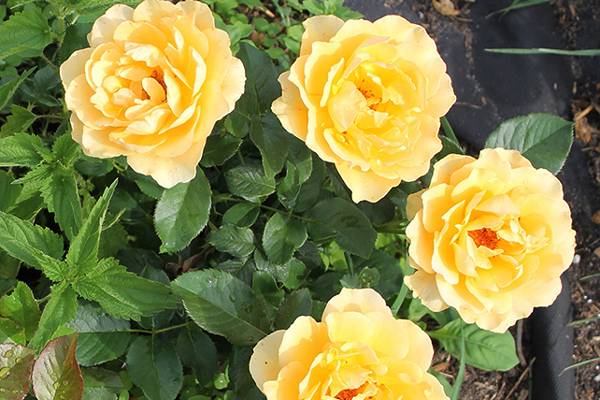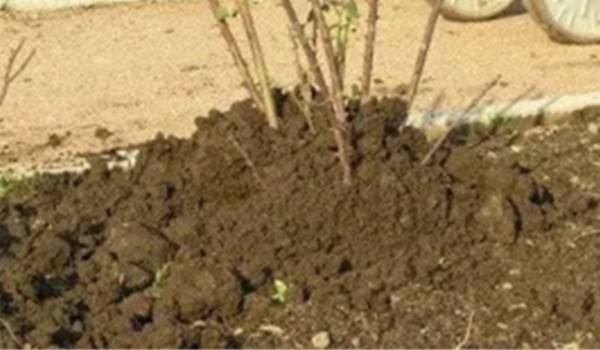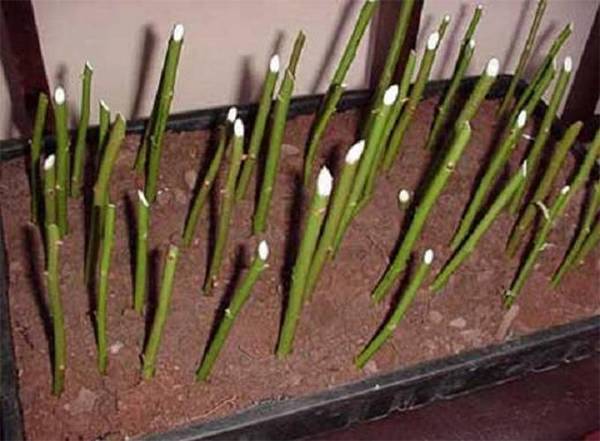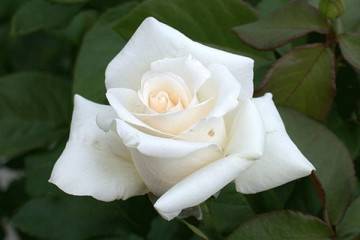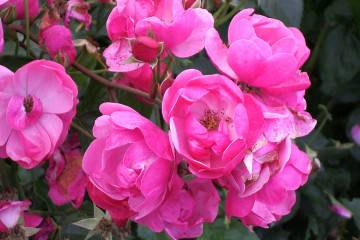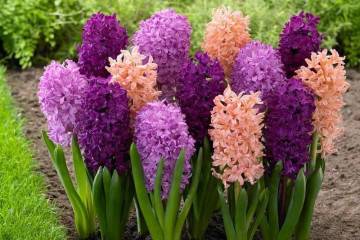Rose Amber Queen
Content:
Most experts call the Amber Queen floribunda the best in the group of colored floribundas that can grow in the northern regions. The variety was bred in the UK, in 1983, by the world's leading hybridizer, David Austin, by crossing the Southampton variety with the Typhoon variety. It is considered the ancestor of yellow roses.
Description of the variety
Rose Amber Queen is a dense and fairly tall (up to 75 cm) bush, dotted with large, green, glossy leaves and cupped amber flowers. Some gardeners note that the width of the bush can reach 60 cm, while others have managed to grow a rose bush 120 cm wide.
Most people associate the scent of this variety with the scent of musk and spices, slightly flavored with an apple-lemon bouquet. The very first flower that appears on the bush at the beginning of the season is usually the largest and doubled. At least 3 flowers are formed on one brush. In most cases, 7 or more flowers are formed. Blooms incessantly. It takes root well on the trunk.
The color of the petals is not uniform and can vary. Admirers of this variety characterize the flowers of Amber Queen as yellow, pink, delicate apricot and amber, but in the official description appears a rich apricot color, close to amber. When planted in an area with good direct light, the rose blooms in a golden yellow color.
The young foliage of the floribunda is painted in a bronze shade, but becomes dark green as it matures. The plant looks good in a flowerbed, framed with other flowers, and in a container. In park areas it can be used as a living curb.
Planting and care rules
Growing a rose is not difficult if you choose the right place. Roses, regardless of the variety, require a lot of sunlight. The grower will have to try to find an area that will be lit for 6-8 or more hours a day.
It should be noted that the Amber Queen rose needs a well-drained soil. If the garden owner is not sure that the soil he has prepared for this flower is of good quality, it will not hurt him to stock up on a commercial potting mix intended for roses.
How exactly the Amber Queen rose should be prepared for planting on a flower bed depends on the form in which it was purchased:
- If the seedling was sold in a container, it means that the root system of the plant has already formed and, perhaps, the rose bush will bloom immediately after planting, in the same year. It is enough to dig a hole, the caliber of which is twice the diameter of the container, and the depth corresponds to the height of the container.
- If the rhizome of the rose was purchased online and delivered by mail, planting in open ground should be preceded by preparatory work.
Preparation and planting of the root system
First, the root is immersed in a bucket of room temperature water and left overnight. In the morning, a hole is dug, the width and depth of which corresponds to the size of the rhizome, and the bud bud should be located 2.5 cm below ground level.
Having straightened the roots inside the hole, the hole is half filled with earth. Then, picking up a garden hose, the loosened soil is intensively watered until it settles on the rhizome in the form of mud. At the next stage, the hole is completely filled with soil. This method negates the formation of air pockets around the plant's root system.
Caring for the Amber Queen rose is quite simple. If the grower already has experience in growing roses, caring for this crop will not give him any trouble.First of all, the plant needs sufficient moisture and nutrients. For most climates, maintenance consists of weekly deep watering.
Caring for Amber Queen
Amber Queen roses need granular universal fertilizers. The first time they must be brought in in the spring, when the leaves begin to open. The second feeding is done at the beginning of the flowering period. It is necessary to accelerate the development of the rose bush. For the third time, the plants are fed in the middle of summer.
In order for the rose to develop well, it must be pruned in late winter or very early spring, when the air begins to warm up, but the juices have not yet begun to move. First, dead, stiff and old stems are removed. Then the side branches are removed. At the end, the bush is trimmed by about a third to stimulate its further growth.
Organic mulch is made from cut grass, hay, foliage, bark, sawdust, cut paper and cardboard, mixed to form a homogeneous mass.
Experienced gardeners never allow plant debris to be found near Amber Queen in early spring, whether it be the remains of dead branches or forgotten cuttings. All this can subsequently turn into a breeding ground for garden pests and viral diseases.
In order for roses of this variety to survive the winter safely, it is necessary:
- clean the bush of not fallen leaves and dried inflorescences;
- huddle the plant by building a high-rise hill about 30 cm around it;
- cover the lower part of the plant with fallen leaves and cover with spruce branches, and cover with a non-woven cloth on top.
Under such a shelter, the Amber Queen rose will survive even the most severe frosts. Roses are opened in the spring, even before the sap flow begins. If this is not done, the bush will rot and rot.
In spring, Amber Queen roses begin to bloom earlier than other crops. At the very beginning of flowering, the plant must be fed with fertilizers that are suitable for roses of any varieties.
Reproduction
The easiest way to propagate roses is by cuttings. Cuttings are harvested in the fall. Landing in open ground (late April or early May) is subject to those of them that managed to survive the winter period. During the cold season, the cuttings rest under a layer of peat mixed with sand and dried moss at freezing temperatures.
Ten-centimeter cuttings are made from the surviving branches. The incisions are made so that there is an oblique cut at the bottom and a straight cut at the top. At a distance of about 3 cm from the sections, they are left along the kidney.
The rose is not afraid of garden pests, but it can wither if it is planted in too acidic or nitrogen-rich soil. Also, Amber Queen cannot stand the cold, piercing wind.
This variety is quite suitable for growing in most regions of Russia. Agricultural technology is not too complicated - even novice flower lovers will be able to cultivate a rose.

